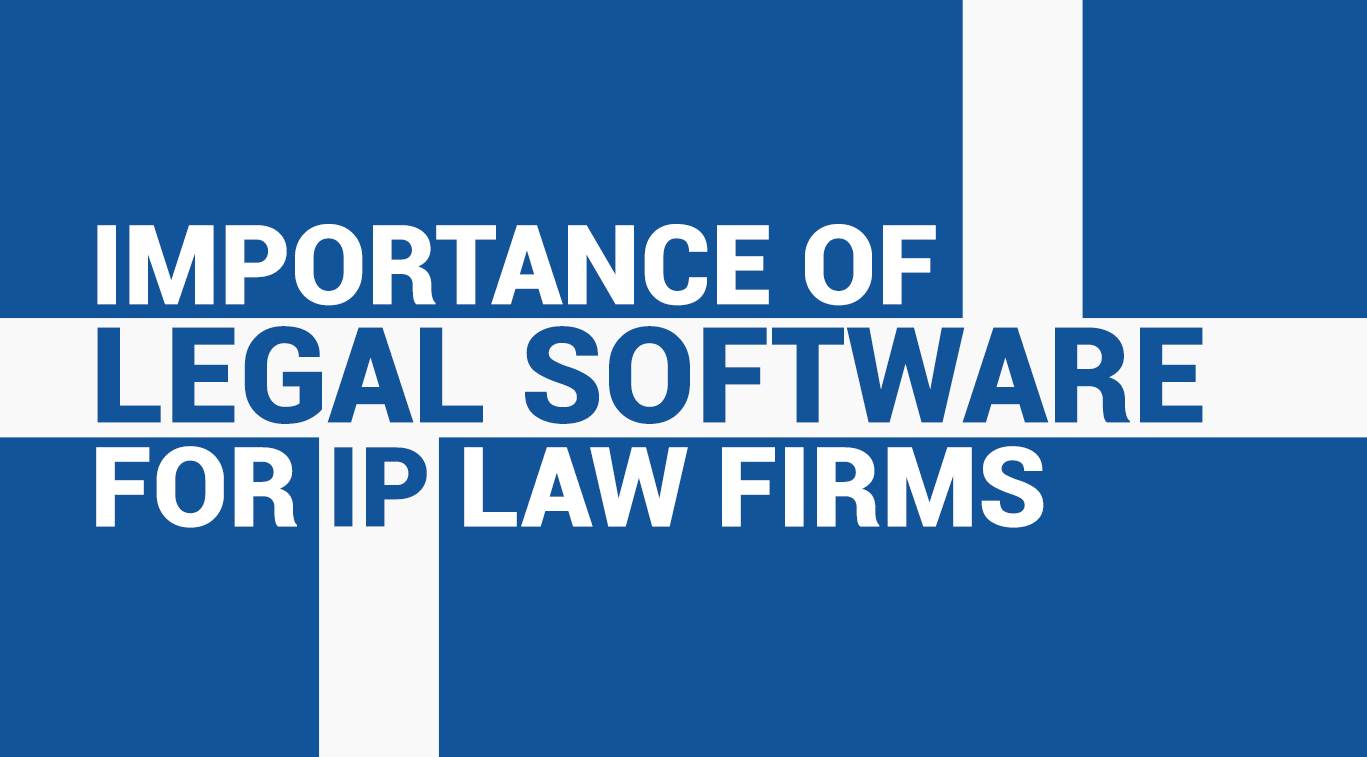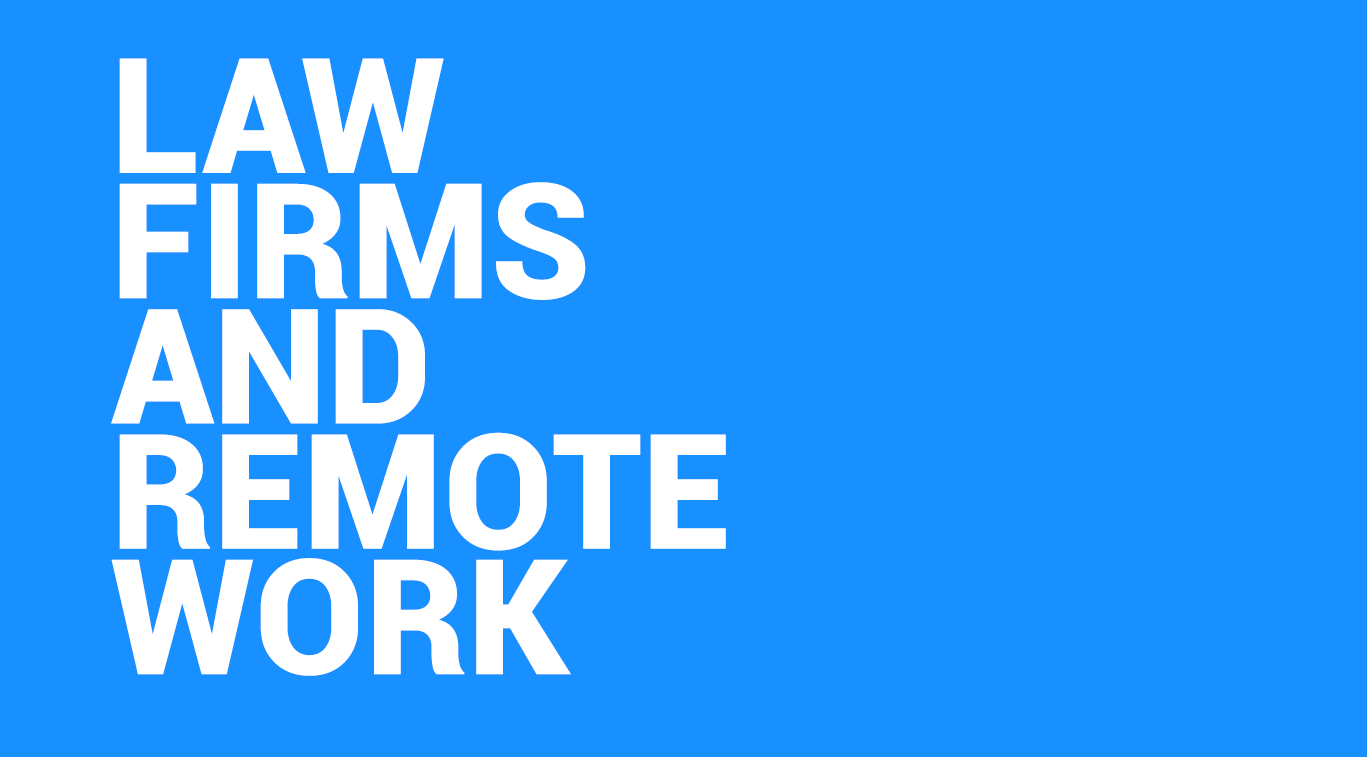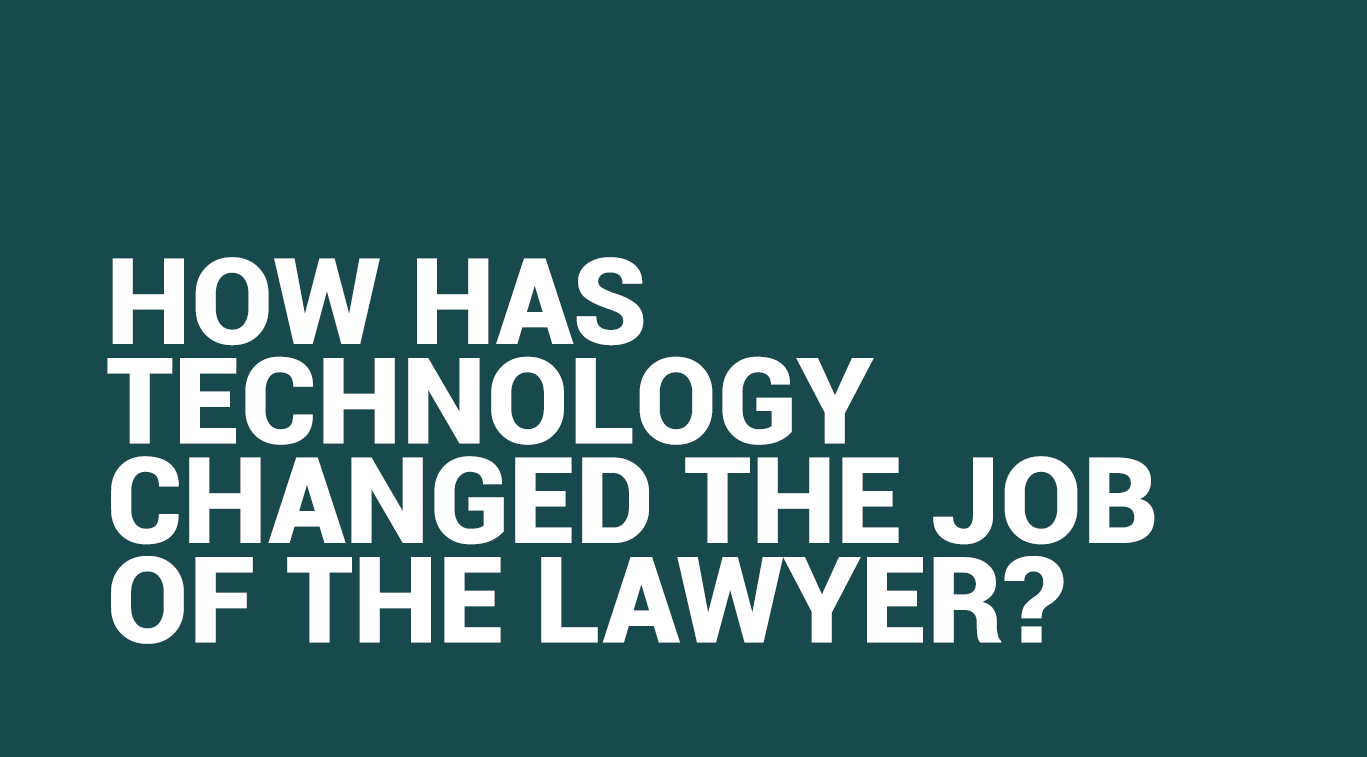Importance of legal software for IP law firms

Written by Shrisha Sapkota
Blogger

Introduction to Intellectual property
Intellectual property (IP) refers to creations of the mind, such as inventions; literary and artistic works; designs; symbols, names and images used in commerce[1]. It is an umbrella term for rights to ideas and creative concepts that have been expressed in tangible form, such as designs, inventions, music, brands, software, games, texts and photos[2]. The aim is to prevent others from wrongly profiting from their creations or inventions[3]. It also gives them an opportunity to earn back the money they invested in developing a product[4].
IP is protected in law by, for example, patents, copyright and trademarks, which enable people to earn recognition or financial benefit from what they invent or create[5]. By striking the right balance between the interests of innovators and the wider public interest, the IP system aims to foster an environment in which creativity and innovation can flourish[6]. Intellectual property rights bring value to businesses as they contribute to consumer confidence in products and services, and they encourage innovation, job creation and many other things[7]. Without protection of ideas, artists would not be fully compensated for their creations and cultural vitality would suffer as a result[8]. Now, it’s not unusual for a company’s intellectual assets to be worth far more than its physical assets[9]. And this is why protecting intellectual property is vitally important to many businesses, whether they are high- or low-tech[10]. The technology and life sciences sectors, for example, are innovating rapidly, and key players in these fields are focusing on investing in research and new products[11]. Intellectual property law protects these products and is therefore fundamental to support a company’s continued growth[12].
However, globalisation and cross-border disputes over intellectual property rights make this area of law even more complex, especially with the difficulties in enforcing penalties to those infringing another’s IP rights across two or more jurisdictions[13]. Moreover, as new technologies such as Artificial Intelligence continues to emerge as a general-purpose technology with widespread applications throughout the economy and society, this poses fundamental questions that sit at the heart of the existing IP systems as it is difficult to fit them in the existing legal frameworks[14].
Furthermore, the intangible nature of intellectual property presents difficulties when compared with traditional property like land or goods[15]. Unlike traditional property, intellectual property is indivisible as an unlimited number of people can “consume” an intellectual good without it being depleted[16].
Additionally, investments in intellectual goods suffer from problems of appropriation because while a landowner can surround their land with a robust fence and hire armed guards to protect it, a producer of information or an intellectual good can usually do very little to stop their first buyer from replicating it and selling it at a lower price[17].
Types of Intellectual Property
Patents
A patent is an exclusive right granted for an invention, which is a product or a process that provides, in general, a new way of doing something, or offers a new technical solution to a problem[18]. It is a type of intellectual property that gives its owner the legal right to exclude others from making, using, or selling an invention for a limited period of time in exchange for publishing an enabling disclosure of the invention[19].
In principle, the patent owner has the exclusive right to prevent or stop others from commercially exploiting the patented invention[20]. In other words, patent protection means that the invention cannot be commercially made, used, distributed, imported or sold by others without the patent owner’s consent[21].
Patents are territorial rights[22]. The procedure for granting patents, requirements placed on the patentee, and the extent of the exclusive rights vary widely between countries according to national laws and international agreements[23]. In general, the exclusive rights are only applicable in the country or region in which a patent has been filed and granted, in accordance with the law of that country or region[24]. The making of an item in China, for example, that would infringe a US patent, would not constitute infringement under US patent law unless the item were imported into the US[25].
The protection is granted for a limited period, generally 20 years from the filing date of the application[26]. Patented materials include products such as industrial processes, machines, and chemical positions[27].
Trademarks
A trademark is a sign capable of distinguishing the goods or services of one enterprise from those of other enterprises[28]. They are used to identify and protect words and design elements that identify the source, owner, or developer of a product or service[29]. A trademark exclusively identifies a product as belonging to a specific company and recognizes the company’s ownership of the brand[30]. A word or a combination of words, letters, and numerals can perfectly constitute a trademark[31]. But trademarks may also consist of drawings, symbols, three-dimensional features such as the shape and packaging of goods, non-visible signs such as sounds or fragrances, or color shades used as distinguishing features, the possibilities are almost limitless[32].
They can be corporate logos, slogans, bands, or the brand name of a product[33].
A trademark may be located on a package, a label, a voucher, or on the product itself[34]. Trademarks used to identify services are sometimes called service marks[35]. Examples of a trademark are word marks or device marks, such as the name Shell or its logo[36]. Also packaging, such as the Coca-Cola bottle can be protected[37].
At the national/regional level, trademark protection can be obtained through registration, by filing an application for registration with the national/regional trademark office and paying the required fees[38]. At the international level, the companies have two options: either you can file a trademark application with the trademark office of each country in which you are seeking protection, or you can use WIPO’s Madrid System[39].
The laws governing trademarks never expire[40]. This means the holder has the right to the trademark for the life of the product or service[41]. But there are certain exceptions, such as the user is required to make continuous, lawful use of the trademark in order to take advantage of trademark laws[42]. So a company or individual must regularly manufacture, produce, market, and sell a product with a particular trademark in order for the trademark law to be enforceable[43].
Copyrights
Copyright (or author’s right) is a legal term used to describe the rights that creators have over their literary and artistic works[44]. Works covered by copyright range from books, music, paintings, sculpture, and films, to computer programs, databases, advertisements, maps, and technical drawings[45]. Copyright protection extends only to expressions, and not to ideas, procedures, methods of operation or mathematical concepts as such[46]. Brand names, slogans, and logos, however, are not covered[47].
In the majority of countries, and according to the Berne Convention, copyright protection is obtained automatically without the need for registration or other formalities[48]. Most countries nonetheless have a system in place to allow for the voluntary registration of works[49]. Such voluntary registration systems can help solve disputes over ownership or creation, as well as facilitate financial transactions, sales, and the assignment and/or transfer of rights[50].
For example, Software copyright is the legal protection for code meant to be read by a machine[51]. It is used by software developers and owners to keep people from copying their intellectual property without permission or from using it in any way they haven’t agreed to[52]. Software is protected under copyright law and the inventions related to software are protected under patent law.
There are two types of rights under copyright: Economic rights, which allow the rights owner to derive financial reward from the use of their works by others; and moral rights, which protect the non-economic interests of the author[53].
Most copyright laws state that the rights owner has the economic right to authorize or prevent certain uses in relation to a work or, in some cases, to receive remuneration for the use of their work (such as through collective management)[54]. The economic rights owner of a work can prohibit or authorize:
- its reproduction in various forms, such as printed publication or sound recording;
- its public performance, such as in a play or musical work;
- its recording, for example, in the form of compact discs or DVDs;
- its broadcasting, by radio, cable or satellite;
- its translation into other languages; and
- its adaptation, such as a novel into a film screenplay[55].
Examples of widely recognized moral rights include the right to claim authorship of a work and the right to oppose changes to a work that could harm the creator’s reputation[56].
Examples to differentiate IP rights
To give an example of Intellectual Property, suppose a person has an idea for a cardholder[57]. The person cannot protect the idea itself because the idea could, in fact, be translated into various different tangible forms[58]. The result could be various types of products[59]. Once the person has given their idea a tangible form, they can look into which IP rights they can use to protect the product[60]. In the above example, a number of options might apply, such as:
- a registered design for the cardholder design;
- a patent for the technique used to slide the cards in and out of the holder;
- a trademark on the name and/or logo under which the product is marketed[61].
The original idea, a cardholder, remains the same but the fact is that various products can be created and each can be protected in its own way[62].
To give another example to classify the intellectual property rights, the copyright for a book is about the words, not about the paper, ink, and binding[63]. A patent, on the other hand, is for an idea that needs to be manufactured to have value and a trademark is for something that represents a brand, but isn’t the product itself[64].
Why do IP law firms need legal software?
Intellectual Property Lawyers work closely with businesses, guiding them through the process of acquiring, protecting and using intellectual property such as patents and copyrights. Their primary objective is to provide counsel to clients seeking to protect their creations, inventions or innovations[65]. Any blatant infringement in IP law will result in serious consequences—largely financial or to the offender’s reputation[66]. For this reason, intellectual property lawyers need to have creative minds and be comfortable dealing with complex and technically demanding subjects[67]. Thus, they need a good software tool to manage all the administrative tasks to make their tasks simpler.
A legal software system provides law firms with the tools to manage and keep track of their various documents, clients and tasks. Good Law software is a complete legal software that provides case management systems, cloud-based services for law firms, law firm client relationship management etc. It also has a law firm email management solution that could help in managing the marketing aspects of IP law firms as email correspondences have had an overhauling effect on legal communications. Its cloud-based legal practice management assures data protection, security and ease for law firms and the workflow and document management systems, saves time, reduces errors and provides an overall better customer experience. For IP lawyers seeking to improve efficiency and reduce costs, this software platform is worth trying out.
References
-
[2] https://www.boip.int/en/entrepreneurs/intellectual-property
[3] https://www.government.nl/topics/intellectual-property/protection-of-intellectual-property
[4] https://www.government.nl/topics/intellectual-property/protection-of-intellectual-property
[5] https://www.wipo.int/about-ip/en/#:~:text=Intellectual%20property%20(IP)%20refers%20to,and%20images%20used%20in%2commerce.
[6] https://www.wipo.int/about-ip/en/#:~:text=Intellectual%20property%20(IP)%20refers%20to,and%20images%20used%20in%
[7 ]https://www.boip.int/en/ip-professionals/news/intellectual-property-law-is-important-for-society#:~:text=Intellectual%20property%20rights%20bring%20value,creation%20and%20many%0other%20things.&text=value%20to%20businesses.-,They%20contribute%20to%20consumer%20confidence%20in%20products%20and%20services%2C%20and,creation%20and%20many%20other20things.
[8] https://www.stopfakes.gov/article?id=Why-is-Intellectual-Property-Important
[9] https://discovery.rsm.nl/articles/497-protecting-the-intellectual-property-in-your-app/
[10] https://discovery.rsm.nl/articles/497-protecting-the-intellectual-property-in-your-app/
[11] https://www.thelawyerportal.com/careers/areas-of-law/intellectual-property-law-what-do-intellectual-property-lawyers-do/
[12] https://www.thelawyerportal.com/careers/areas-of-law/intellectual-property-law-what-do-intellectual-property-lawyers-do/
[13] https://www.thelawyerportal.com/careers/areas-of-law/intellectual-property-law-what-do-intellectual-property-lawyers-do/
[14] https://www.wipo.int/about-ip/en/frontier_technologies/ai_and_ip.html
[15] https://en.wikipedia.org/wiki/Intellectual_property#Motivation_and_justification
[16] https://en.wikipedia.org/wiki/Intellectual_property#Motivation_and_justification
[17] https://en.wikipedia.org/wiki/Intellectual_property#Motivation_and_justification
[18] https://www.wipo.int/patents/en/
[19] Herman v. Youngstown Car Mfg. Co., 191 F. 579, 584–85, 112 CCA 185 (6th Cir. 1911)
[20] https://www.wipo.int/patents/en/
[21] https://www.wipo.int/patents/en/
[22] https://www.wipo.int/patents/en/
[23] https://en.wikipedia.org/wiki/Patent
[24] https://www.wipo.int/patents/en/
[25] https://en.wikipedia.org/wiki/Patent
[26] https://www.wipo.int/patents/en/
[27] https://www.investopedia.com/terms/c/copyright.asp
[28] https://www.wipo.int/trademarks/en/
[29] https://www.investopedia.com/terms/t/trademark.asp
[30] https://www.investopedia.com/terms/t/trademark.asp
[31] https://www.wipo.int/trademarks/en/
[32] https://www.wipo.int/trademarks/en/
[33] https://www.investopedia.com/terms/t/trademark.asp
[34] https://en.wikipedia.org/wiki/Trademark
[35] https://en.wikipedia.org/wiki/Trademark
[36] https://english.rvo.nl/information/patents-intellectual-property/general-information-patents/types-patents-ip-rights/trademarks#:~:text=A%20trademark%20is%20a%20sign,from%20those%20of%20your%20competitors.&text=Examples%20of%20a%20trademark%20are,Cola%20bottle%20can%20be%20protected.
[37] https://english.rvo.nl/information/patents-intellectual-property/general-information-patents/types-patents-ip-rights/trademarks#:~:text=A%20trademark%20is%20a%20sign,from%20those%20of%20your%20competitors.&text=Examples%20of%20a%20trademark%20are,Cola%20bottle%20can%20be%20protected.
[38] https://www.wipo.int/trademarks/en/
[39] https://www.wipo.int/trademarks/en/
[40] https://www.investopedia.com/terms/t/trademark.asp
[41] https://www.investopedia.com/terms/t/trademark.asp
[42] https://www.investopedia.com/terms/t/trademark.asp
[43] https://www.investopedia.com/terms/t/trademark.asp
[44] https://www.wipo.int/copyright/en/#:~:text=Copyright%20(or%20author’s%20right)%20is,%2C%20maps%2C%20and%20technical%20drawings.
[45] https://www.wipo.int/copyright/en/#:~:text=Copyright%20(or%20author’s%20right)%20is,%2C%20maps%2C%20and%20technical%20drawings.
[46] https://www.wipo.int/copyright/en/#:~:text=Copyright%20(or%20author’s%20right)%20is,%2C%20maps%2C%20and%20technical%20drawings.
[47] https://www.investopedia.com/terms/t/trademark.asp
[48] https://www.wipo.int/copyright/en/#:~:text=Copyright%20(or%20author’s%20right)%20is,%2C%20maps%2C%20and%20technical%20drawings.
[49] https://www.wipo.int/copyright/en/#:~:text=Copyright%20(or%20author’s%20right)%20is,%2C%20maps%2C%20and%20technical%20drawings.
[50] https://www.wipo.int/copyright/en/#:~:text=Copyright%20(or%20author’s%20right)%20is,%2C%20maps%2C%20and%20technical%20drawings.
[51] https://cpl.thalesgroup.com/software-monetization/software-copyright-guide
[52] https://cpl.thalesgroup.com/software-monetization/software-copyright-guide
[53] https://www.wipo.int/copyright/en/#:~:text=Copyright%20(or%20author’s%20right)%20is,%2C%20maps%2C%20and%20technical%20drawings.
[54] https://www.wipo.int/copyright/en/#:~:text=Copyright%20(or%20author’s%20right)%20is,%2C%20maps%2C%20and%20technical%20drawings.
[55] https://www.wipo.int/copyright/en/#:~:text=Copyright%20(or%20author’s%20right)%20is,%2C%20maps%2C%20and%20technical%20drawings.
[56] https://www.wipo.int/copyright/en/#:~:text=Copyright%20(or%20author’s%20right)%20is,%2C%20maps%2C%20and%20technical%20drawings.
[57] https://www.boip.int/en/entrepreneurs/intellectual-property
[58] https://www.boip.int/en/entrepreneurs/intellectual-property
[59] https://www.boip.int/en/entrepreneurs/intellectual-property
[60] https://www.boip.int/en/entrepreneurs/intellectual-property
[61] https://www.boip.int/en/entrepreneurs/intellectual-property
[62] https://www.boip.int/en/entrepreneurs/intellectual-property
[63] https://cpl.thalesgroup.com/software-monetization/software-copyright-guide
[64] https://cpl.thalesgroup.com/software-monetization/software-copyright-guide
[65] https://onlinellm.usc.edu/llm-careers/intellectual-property-lawyer/
[66] https://www.td.org/insights/what-are-the-legal-challenges-with-intellectual-property
[67] https://www.thelawyerportal.com/careers/areas-of-law/intellectual-property-law-what-do-intellectual-property-lawyers-do/0commerce.








